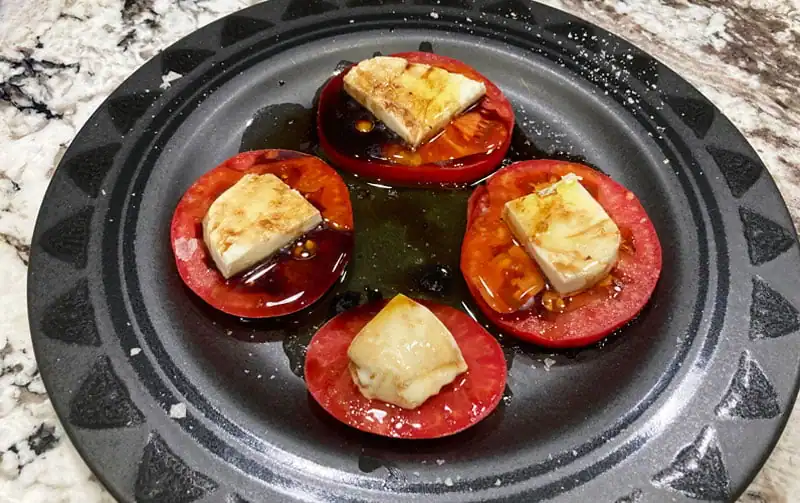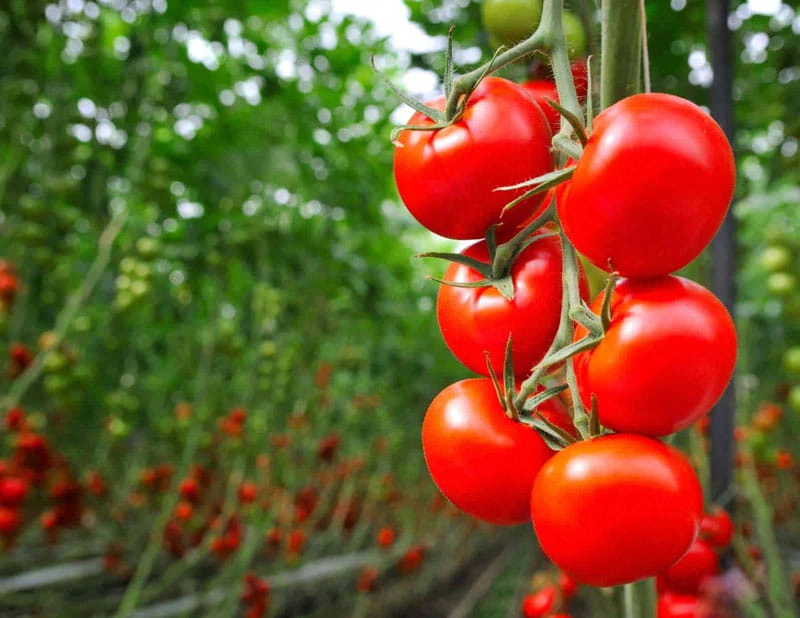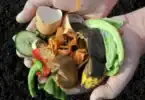In recent years, gardeners have discovered its effectiveness of using Epsom salt for tomatoes. Epsom salt is a cost-effective, organic solution for magnesium deficiency that can help boost tomato yields.
Tomatoes are a popular garden crop that require a lot of nutrients to grow and produce fruit. Epsom salt is a great source of magnesium, which is a vital nutrient for tomato plants. Magnesium helps plants to produce chlorophyll, which is essential for photosynthesis and plant growth. By adding Epsom salt to the soil, gardeners can provide their tomato plants with the nutrients they need to thrive.
Using Epsom salt as a natural soil supplement for tomatoes is easy and can be done in a variety of ways. In this article, we will explore the benefits of using Epsom salt as a natural nutrient for tomatoes and provide tips on how to use it for maximum yields.
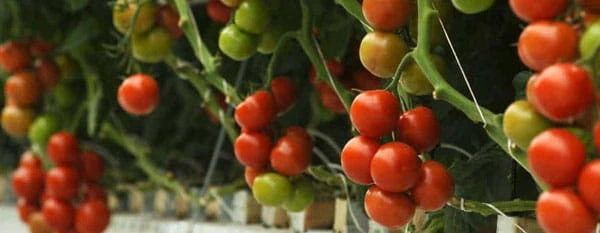
Benefits of Epsom Salt for Tomatoes as a Natural Supplement
Tomato plants require various nutrients to grow and produce healthy fruits. Epsom salt is an excellent natural source that provides magnesium and sulfur to tomato plants, which are essential nutrients for plant growth.
Magnesium is a vital component of chlorophyll, which helps plants to produce energy through photosynthesis. It also plays a crucial role in the formation of plant growth hormones, which are necessary for stem and foliage development.
Sulfur is another essential nutrient that is required for plant growth. It helps to form proteins, amino acids, and vitamins that are necessary for healthy plant growth. Sulfur also plays a crucial role in the development of fruit and flowering in tomato plants.
Magnesium deficiency can cause stunted growth, yellowing of leaves, and reduced fruit development. Sulfur deficiency can lead to black spot on leaves, reduced growth, and poor fruit development. Epsom salt can help to prevent these nutrient deficiencies and promote healthy plant growth.
In addition to providing essential nutrients, Epsom salt can also improve soil quality. It can help improve soil moisture retention and promote the growth of beneficial microbes.
How Do You Know if your Soil Lacks Magnesium?
The best way to know if your soil does not have enough magnesium is to obtain a soil test. Your tomato plants might also give you the signs that you might want to test your soil. Look for:
- Leaves that are yellowed, or even with brownish to reddish spots, but where the veins of the leaf still show green
- Stunted plants
- Plants that set very few blossoms
- Plants that produce fewer fruits than expected
These issues are important to note and to correct, especially if you grow tomatoes in the same spot every summer.
One other option is to try Epsom Salt on just one or a few of your tomato plants and compare how they do to other tomatoes that are untreated. This is a pretty simple way to tell if Epsom Salt is beneficial in your environment with your soil. See the instructions for this in the last section in this article.
How to Use Epsom Salt for Maximum Yields
Epsom salt is a natural material that can be used as a supplement for tomatoes. It is an inexpensive and easily available product. In fact, you might even have some in your bathroom storage closet: Epsom Salts are often used for bath soaks or foot soaks. Epsom salt contains micronutrients that are essential for plant growth, including magnesium and sulfur. When used correctly, Epsom salt can help increase the yield of your tomato plants.
Preparing the Soil
Before planting your tomatoes, you can add Epsom salt to the soil to help improve the soil’s magnesium content. This will help your plants grow stronger and produce more fruit. To prepare the soil, follow these steps:
- Dig a hole for each tomato plant that is about twice the size of the plant’s root ball.
- Add 1 tablespoon of Epsom salt to each hole.
- Mix the Epsom salt into the soil a bit to disperse.
- Place the tomato plant into the hole and cover with soil.
If you plant containers of tomatoes on your patio, and especially if you reuse planting mix in the pots from year to year, adding Epsom Salt to each container can be beneficial.
Foliar Spray
Epsom salt can also be used as a foliar spray to provide your tomato plants with additional nutrients.
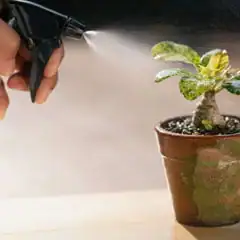
A foliar spray is a liquid supplement that is sprayed directly onto the leaves of the plant.
To make a Epsom salt foliar spray, follow these steps:
- Dissolve 1 tablespoon of Epsom salt in 1 gallon of water.
- Pour the solution into a spray bottle.
- Shake well before each use.
- Spray the solution onto the leaves of your tomato plants until they are wet. Spraying both the top and the bottom of the leaves can be helpful for nutrient absorption.
If your tomato plants are very young and newly planted, the diluted Epsom salt can be carefully applied to the soil rather than directly onto the leaves, ensuring that the root zone receives proper nourishment without stressing the young plant. Too much magnesium on the tender leaves of young plants can damage them. Once leaves are older and hardened to the outdoors, the foliar spray should be fine – but of course discontinue use if you see signs of plant stress.
Sometimes people worry about using a foliar spray on tomato plants if it gets on the surface of the tomato fruits. You need not worry about this with Epsom Salt. In the first place, you probably wash your tomatoes before consuming them. In the second place, Epsom Salt is safe for human consumption in small amounts – one of it’s lesser known uses is as a laxative!
Side Dressing
Side dressing is the process of adding nutrients to the soil around the base of the plant. To side dress your tomato plants with Epsom salt, follow these steps:
- Sprinkle 1 tablespoon of Epsom salt around the base of each tomato plant.
- Use a rake or hoe to mix the Epsom salt into the soil.
- Water the plants thoroughly.
Epsom Salt: Not a Substitute for Fertilizer
It is important to note that Epsom salt should not be used as a replacement for a balanced fertilizer. It should be used in addition to fertilizers which provide your plants with a complete range of nutrients such as Phosphorus (P), Potassium (K), and Nitrogen (N), as well as trace minerals such as Calcium, Zinc and Iron.
Some fertilizers already contain small amounts of magnesium and sulfur. Check the label on the fertilizer that you use to find out. If it does already contain magnesium (typically the value will be about 0.5%) don’t also use Epsom Salt. More is not better.
Recommended Application Rate of Epsom Salt for Tomato Plants
When it comes to using Epsom salt as a natural supplement for tomato plants, determining the recommended application rate is important for achieving optimal results.
The ideal application rate of Epsom salt for tomato plants depends on various factors, such as the size of the plants and the soil conditions.
As a general guideline, it is commonly recommended to use Epsom salt at a rate of 1 tablespoon per gallon of water. This diluted solution can be applied directly to the soil around the tomato plants or used as a foliar spray. If using Epsom Salt when initially planting, the general guideline is 1 tablespoon per plant hole.
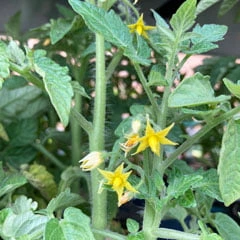
When applying Epsom salt for tomatoes, it’s important to consider the growth stage of the plants. For young tomato seedlings, it is advisable to wait until they have developed their first true leaves before applying Epsom salt.
That is why people who know that their soil tends to be deficient in magnesium prefer to put the supplement in the ground underneath the plant so that it can take up the nutrient as the roots grow.
While Epsom salt can provide numerous benefits to tomato plants, it’s important to exercise caution and avoid over-application.
Excessive use of Epsom salt can lead to magnesium buildup in the soil, which can negatively affect the plant’s overall health. It is recommended to conduct a soil test before applying Epsom salt to determine the specific nutrient requirements of the soil and plants.
While Epsom Salt should be Epsom Salt (and you should be able to pick any of them), this is a Epsom Salt for plant nutrition, so this package has lots of useful details on the back of the package about application rates and methods. It also describes how you can use it for a foot soak after you get done taking care of your garden. This is a 7 pound bag.
Can Epsom Salt Help Prevent or Treat Tomato Plant Diseases?
Epsom salt, with its rich magnesium and sulfur content, is primarily known for its benefits as a natural supplement. While it can enhance the growth and development of tomato plants, it is not intended for treating common tomato plant diseases. That being said, a healthy tomato plant that is getting the right amount of magnesium and sulfur may be more resistant to fungal diseases and powdery mildew.
Providing optimal growing conditions, such as adequate sunlight, well-drained soil, and proper spacing, can contribute to stronger, healthier plants that are more resilient against diseases.
While Epsom salt can support overall plant health, it is important to manage disease concerns through a holistic approach that integrates various strategies. Regular monitoring, prompt identification of symptoms, and timely intervention are key to maintaining healthy tomato plants and mitigating the impact of common diseases.
Are There Any Drawbacks or Risks with Using Epsom Salt for Tomatoes
The primary drawback of using Epsom salt as a supplement is the risk of over-application. Excessive amounts of Epsom salt can lead to an accumulation of magnesium and sulfur in the soil, which can negatively affect the pH balance and nutrient uptake of plants, particularly Calcium. More is not better, so it is important to follow the dosing guidelines above.
Soil testing is one definitive way to know if you need to supplement your soil. Soil testing can also tell you about what other nutrients that your local soil lacks (or has in abundance).
Also, Epsom salt should not be considered a complete fertilizer on its own. It provides magnesium and sulfur, but tomato plants require a range of other nutrients for optimal growth and productivity.
Relying solely on Epsom salt as a garden supplement neglects other essential nutrients, leading to deficiencies and potential nutrient imbalances in the plants.
Lastly, some tomato varieties may be more sensitive to high levels of magnesium or sulfur. It is advisable to observe the plants closely after applying Epsom salt and monitor for any adverse effects, such as leaf discoloration or stunted growth.
If any negative symptoms appear, it is recommended to discontinue the use of Epsom salt and re-evaluate your nutrient supplementation approach accordingly.
How to Test Soil for Magnesium Deficiency
The best way to test for magnesium deficiency in your garden soil is to get a professional soil test. These type of tests are often available from your local county extension office. Tests are sometimes also available from your state’s land grant university (the one with the Agricultural programs). At the time of writing this article, the cost of doing a test was at least $40 – $45. The tests involve collecting a soil sample, mailing it in and waiting for a while to get the results. The upsides of this type of test:
- You’ll find out exactly what your Magnesium level is in the soil and that level does not tend to change unless you amend the soil or if something catastrophic happens (like a flood).
- You’ll get helpful readings on a bunch of other soil factors like pH, Nitrogen, Potassium and Phosphorus levels that can help you decide what type of fertilizer to use.
If your only interest is growing a few tomato plants, this is probably not worth the expense and time. I have a “home grown” suggestion for figuring out if your soil might benefit from adding Epsom salt to amend your soil.
- Pick a place in your garden to grow at least 3 tomato plants. They should be spaced at least 2 feet apart, but should have the same conditions (sunlight, amount of water, etc.). You can also use large container pots on your patio for this experiment. Ceramic or terra cotta pots with good drainage should be used. The pots need to be at least 12″ diameter with a similar height, but larger than that is better.
- Use the same soil for all of the plants. Obviously, you need to get the soil from your garden if you are using containers.
- Plant all the tomatoes at the same time. The plants should be similar (all cherry tomatoes, or all heirlooms, etc.)
- Pick one of the plants to be the magnesium test plant. When planting this one, add a tablespoon of Epsom salt to the soil and distribute it around the roots of the plant
- Through the summer, treat all the plants the same, but the magnesium test plant may have a tablespoon of Epsom salt added to it’s water once a month.
At the end of the summer, evaluate what happened. Did the test plant do better than the other plants? Worse? Were the fruits more prolific? Were the tomatoes sweeter? The answers to these questions can tell you whether magnesium deficiency is something you need to think about or not.
Final Thoughts
Using Epsom salt as a natural supplement for tomatoes can be an effective way to increase yields and improve the overall health of the plants when your soil lacks magnesium. By using Epsom salt in combination with natural fertilizers and good gardening practices, gardeners can enjoy healthy, productive tomato plants and a bountiful harvest.
To learn about using Epsom salt with other garden plants, you might like the article on green peppers: Epsom Salt for Pepper Plants: How To Use It For Premium Peppers. If you know through testing that the all the soil in your yard is magnesium deficient, a popular pivot is to amend your compost pile, as discussed in: Epsom Salt In Compost: Enhancing Quality and Nutrient Content.
